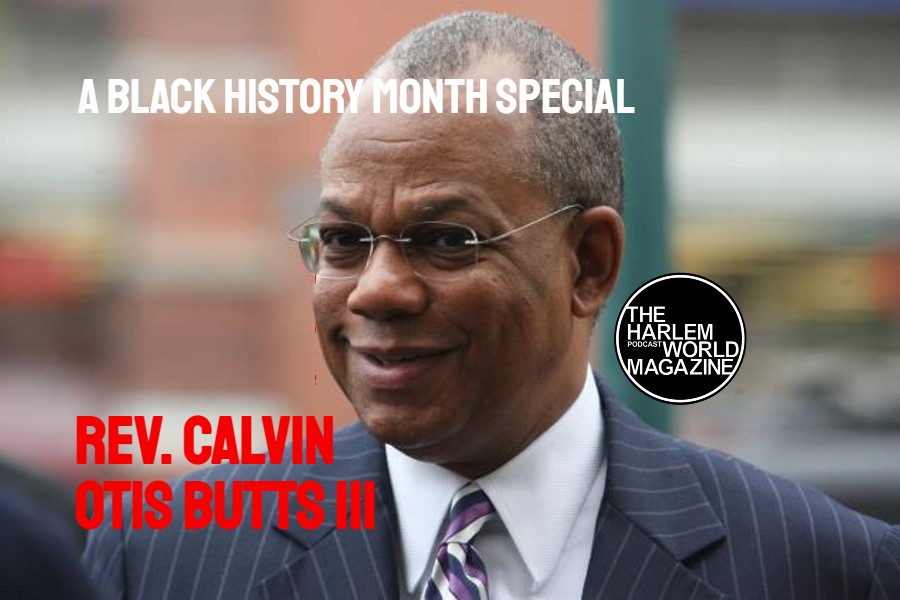Egbert Austin “Bert” Williams (November 12, 1874 – March 4, 1922) was one of the preeminent entertainers of the Vaudeville era and one of the most popular comedians for all audiences of his time.
“(Bert Williams was)…central to the development of a global black modernism centered in Harlem’s Renaissance.”
He was by far the best-selling black recording artist before 1920. In 1918, the New York Dramatic Mirror called Williams “one of the great comedians of the world,” and in the book The Last Darky said Williams was “…central to the development of a global black modernism centered in Harlem’s Renaissance.”
Williams was a key figure in the development of African-American entertainment. In an age when racial inequality and stereotyping were commonplace, he became the first black American to take a lead role on the Broadway stage, and did much to push back racial barriers during his career. Fellow vaudevillian W.C. Fields, who appeared in productions with Williams, described him as “the funniest man I ever saw – and the saddest man I ever knew.”
Williams was born in Antigua, West Indies, and at the age of 10 he was brought to New York City by his parents. From New York City the family moved to Riverside, California, where Williams graduated from Riverside High School. He later went to San Francisco, intending to study to be a civil engineer, but instead joined a minstrel company known as “The Mastoden Minstrels”, which played the lumber and mining camps of California. In 1893, in San Francisco he formed the team of Williams and Walker, his partner being equally celebrated straight man George Walker. They first met at the home of George Walker at 52 West 133rd Street in Harlem.
Williams became one of Vaudeville’s top solo artists, but he first gained notice as half of the successful double-act “Williams & Walker.” He and George Walker performed song-and-dance numbers, comic dialogues and skits, and humorous songs. They fell into stereotypical vaudevillian roles: originally Williams portrayed a slick conniver, while Walker played the “dumb coon” victim of Williams’ schemes. However, they soon discovered that they got a better reaction by switching roles. The sharp-featured and slender Walker eventually developed a persona as a strutting dandy, while the stocky Williams played the languorous oaf. Despite his thickset physique, Williams was a master of body language and physical “stage business.”
In late 1896, the pair were added to The Gold Bug, a struggling musical. The show did not survive, but Williams & Walker got good reviews, and were able to secure higher profile bookings. They headlined the Koster and Bial’s vaudeville house for 36 weeks in 1896-97, where their spirited version of the cakewalk helped popularize the dance. The pair performed in burnt-cork blackface, as was customary at the time, billing themselves as “Two Real Coons” to distinguish their act from the many white minstrels also performing in blackface. Williams also made his first recordings in 1896, but none are known to survive.
In 1899 Bert surprised his partner George Walker and his family when he announced he had recently married Charlotte (“Lottie”) Thompson, a singer with whom he had worked professionally, in a very private ceremony. Lottie was a widow 8 years Bert’s senior and a homebody, thus the match seemed odd to some who knew the gregarious and constantly traveling Williams, but all who knew them considered them a uniquely happy couple and the union lasted until his death. The Williamses never had children biologically but they adopted three of Lottie’s nieces and frequently sheltered orphans and foster children in their homes.
Williams & Walker appeared in a succession of shows, including A Senegambian Carnival, A Lucky Coon, and The Policy Players. Their stars were on the ascent, but they still faced vivid reminders of the limits placed on them by white society. In August 1900, in New York City, hysterical rumors of a white detective having been shot by a black man erupted into an uncontained riot. Unaware of the street violence, Williams & Walker left their theater after a performance and parted ways. Williams headed off in a fortunate direction, but Walker was yanked from a streetcar by a white mob and was beaten.
The following month, Williams & Walker had their greatest success to date with Sons of Ham, a broad farce that was perhaps most notable for its lack of the extreme “darkie” stereotypes which were then common. The pair had already begun to transition away from racial minstrel conventions to a more human style of comedy. In 1901, they recorded thirteen discs for the Victor Talking Machine Company. Some of these, like “The Phrenologist Coon,” were standard blackface material, but the financial lament “When It’s All Going Out and Nothing Coming In” was race-blind, and became one of Williams’ best-known songs. Another Williams composition, “Good Morning Carrie”, was covered by many artists, becoming one of the biggest hits of 1901. These discs existed only in pressings of fewer than 1,000, and were not heard by very many listeners. Sons of Ham ran for two years.
In September 1902, Williams & Walker debuted their next vehicle, In Dahomey, which was an even bigger hit. In 1903 the production, with music by Will Marion Cook and lyrics by Paul Laurence Dunbar moved to New York City, where it became the first black musical to open on Broadway. This was a landmark event, but seating inside the theater was segregated. One of the musical’s songs, “I’m a Jonah Man,” helped codify Williams’ hard-luck persona and tales of woe. In Dahomey then traveled to London, where it was enthusiastically received. A command performance was given at Buckingham Palace in June 1903.
In February 1906, Abyssinia, with a score co-written by Williams, premiered at the Majestic Theater. The show, which included live camels, was another smash. Williams committed many of its songs to disc and cylinder. One of them, “Nobody”, became his signature theme, and the song he is best remembered for today. It is a doleful and ironic composition, replete with his dry observational wit, and is perfectly complemented by Williams’ intimate, half-spoken singing style.
- When life seems full of clouds and rain,
- And I am filled with naught but pain,
- Who soothes my thumping, bumping brain?
- [pause] Nobody.
- When winter comes with snow and sleet,
- And me with hunger and cold feet,
- Who says, “Here’s two bits, go and eat”?
- [pause] Nobody.
- I ain’t never done nothin’ to Nobody.
- I ain’t never got nothin’ from Nobody, no time.
- And, until I get somethin’ from somebody sometime,
- I don’t intend to do nothin’ for Nobody, no time.
Williams became so identified with the song that he was obliged to sing it in almost every appearance for the rest of his life. He considered its success both blessing and curse: “Before I got through with ‘Nobody,’ I could have wished that both the author of the words and the assembler of the tune had been strangled or drowned… ‘Nobody’ was a particularly hard song to replace.” “Nobody” remained active in Columbia’s sales catalogue into the 1930s, and the musicologist Tim Brooks estimates that it sold between 100,000 and 150,000 copies, a phenomenally high amount for the era.
Williams’ langorous, drawling delivery was the primary selling point of several similarly-structured Williams recordings, such as “Constantly” and “I’m Neutral.” Williams even recorded two compositions titled “Somebody” and “Everybody.” His style was inimitable. In an era when the most popular songs were simultaneously promoted by several artists (for example, “Over There” was a top ten hit for six different acts in 1917-18), Williams’ repertoire was left comparatively untouched by competing singers.
Williams & Walker were prominent success stories for the black community, and they received both extensive press coverage and frequent admonitions to properly “represent the race.” Leading black newspapers mounted campaigns against demeaning stereotypes such as the word “coon.” Williams & Walker were sympathetic, but also had their careers to consider, where they performed before many white audiences. The balancing act between their audience’s expectations and their artistic impulses was tricky.
In his only known essay, Williams wrote:
-
“People sometimes ask me if I would not give anything to be white. I answer . . . most emphatically, “No.” How do I know what I might be if I were a white man? I might be a sandhog, burrowing away and losing my health for $8 a day. I might be a streetcar conductor at $12 or $15 a week. There is many a white man less fortunate and less well-equipped than I am. In fact, I have never been able to discover that there was anything disgraceful in being a colored man. But I have often found it inconvenient . . . in America.”
In 1908, while starring in the successful Broadway production Bandanna Land, Williams & Walker were asked to appear at a charity benefit by George M. Cohan. Walter C. Kelly, a prominent monologist, protested and encouraged the other acts to withdraw from the show rather than appear alongside black performers. But only two of the acts joined Kelly’s boycott.
Also, in 1908 the Frogs was a group of African-American men who were theatrical professionals. Founded by 11 men: Bert Williams, George Walker and Sam Calker (seen in this detail from a group portrait) along with Bob Cole, Lester A. Walton, James Reese Europe, Alex Rogers, Tom Brown, J. Rosamond Johnson, Jesse Ship, and R.C. McPherson (Cecil Mack). They first met at the home of George Walker at 52 West 133rd Street in Harlem. He was elected their first president; J. Rosamond Johnson, vice president; Jesse Shipp, treasurer; James Reese Europe, librarian; and Bert Williams, head of the art committee. Their purpose was to form an archival collection of social, historical and literary materials for a theatrical library in a clubhouse which was built later at 111 West 132nd Street.
They were greatly respected in the Harlem community and continued for years as a leading professional club, admitting lawyers and doctors as well as theatrical people. The crowds were overflowing and this affair was one of the biggest social events in Harlem.
Bert Williams, was elected president of the Frogs around 1910.
======
Bandanna Land continued the duo’s series of hits, and introduced a sketch that Williams made famous: his pantomime poker game. In total silence, Williams acted out a hand of poker, with only his facial expressions and body language conveying the dealer’s up-and-down emotions. It became a standard routine in his stage act, and was recorded on film by Biograph Studios in 1916.
Walker was in ill health by this point, apparently due to syphilis, and was forced to drop out of Bandanna Land in early 1909. The famous pair never performed in public again, and Walker died less than two years later. Walker had been the businessman and public spokesman for the duo. His absence left Williams professionally adrift. His next moves in show business were cautious and tentative. He did a short solo act for the high-class vaudeville circuit, consisting of four songs and a dance. Williams next starred as Mr. Lode of Koal, a farce about a kidnapped king that was well received by critics, but which played a secondary string of theaters and was a box office flop.
After Mr. Lode skidded to a halt, Williams accepted an unprecedented offer to join Flo Ziegfeld’s Follies. The idea of a black-featured performer amid an otherwise all-white show was a shock in 1910. Williams’ initial reception was cool, and several cast members delivered an ultimatum to Ziegfeld that Williams be fired. Ziegfeld held firm, saying: “I can replace every one of you, except [Williams].” The show’s writers were slow to devise material for him to perform. But by the time the show finally debuted in June, Williams was a sensation. Reviews were uniformly positive for Williams, and also for Fanny Brice, who was making her Broadway debut.
Following his success, Williams signed an exclusive contract with Columbia Records, and recorded four of the show’s songs. His elevated status was signaled not just by the generous terms of the contract, but by the tenor of Columbia’s promotion, which dropped much of the previous “coon harmony”-type sales patter and began touting Williams’ “inimitable art” and “direct appeal to the intelligence.” Tim Brooks wrote, “Williams had become a star who transcended race, to the extent that was possible in 1910.” All four songs sold well, and one of them, “Play That Barbershop Chord,” became a substantial hit.
Few stage performers were recording regularly in 1910, in some cases because their onstage styles did not translate to the limited technical media. But Williams’ low-key natural delivery was ideal for discs of the time, and his personality was warm and funny.
Williams returned for the 1911 edition of the Ziegfeld Follies, teaming up in some sketches with the comedian Leon Errol to ecstatic effect. Williams also reprised his poker routine, and popularized a song called “Woodman, Spare That Tree.” In January 1913, he recorded several more sides for Columbia, including a new version of “Nobody,” the 1906 copies having long since become scarce. All of the releases remained in Columbia’s catalog for years. Williams continued as a featured star of the Follies, and made several more recording dates for Columbia, though he stopped writing his own songs by 1915. He also began making film appearances, though most have been lost. One of them, A Natural Born Gambler, shows his pantomime poker sketch, and is the best-known footage of Williams available.
Around this time Williams lived in Harlem on Adam Clayton Powell Jr. Boulevard, when in 1917 installment of Ziegfeld’s Follies featured a rich array of talent, including W.C. Fields, Will Rogers, and Eddie Cantor, as well as Brice and Williams. Williams and Cantor did scenes together, and struck up a close friendship. In 1918-19, Williams went on a hiatus from the Follies. Over the next four years, he recorded several records in the guise of “Elder Eatmore,” an unscrupulous preacher, as well as songs dealing with Prohibition, such as “Everybody Wants a Key to My Cellar,” “Save a Little Dram for Me,” “Ten Little Bottles,” and the smash hit, “The Moon Shines on the Moonshine.” By this point, Williams’ records were taking up a full page in Columbia’s catalog, and they were among the strongest-selling songs of the age. At a time when 10,000 sales was considered a very successful major label release, Williams had four songs that shipped between 180,000 and 250,000 copies in 1920 alone. Williams, along with Al Jolson and Nora Bayes, was one of the three most highly paid recording artists in the world.
Williams continued to face racism, but due to his success and popularity, he was in a better position to deal with it. On one occasion, when he attempted to buy a drink at the bar of New York’s elegant Hotel Astor, the white bartender tried to chase Williams away by telling him that he would be charged $50. Williams’ response was to produce a thick roll of hundred dollar bills out of his pocket; placing the wad on the bar, he ordered a round for everyone in the room.
Williams’ stage career lagged after his final Follies appearance in 1919. His name was enough to open a show, but they had shorter, less profitable runs. In December 1921, Under the Bamboo Tree opened, to middling results. Williams still got good reviews, but the show did not. Williams developed pneumonia, but did not want to miss performances, knowing that he was the only thing keeping an otherwise moribund musical alive at the box office.
On February 27, 1922 Williams collapsed during a performance in Detroit, Michigan, which the audience initially thought was a comic bit. Helped to his dressing room, Williams quipped, “That’s a nice way to die. They was laughing when I made my last exit.” He returned to New York, but his health worsened. He died on March 4, at the age of forty-seven. Few had suspected that he was sick, and news of his death came as a public shock. More than 5,000 fans filed past his casket, and thousands more were turned away. Williams was buried in Woodlawn Cemetery, Bronx, New York.
In 1910, Booker T. Washington wrote of Williams: “He has done more for our race than I have. He has smiled his way into people’s hearts; I have been obliged to fight my way.” Gene Buck, who had discovered W. C. Fields in vaudeville and hired him for the Follies, wrote to a friend on the occasion of Fields’ death: “Next to Bert Williams, Bill [Fields] was the greatest comic that ever lived.”
In 1940, Duke Ellington composed and recorded “A Portrait of Bert Williams,” a subtly crafted tribute. In 1978, in a memorable turn on a Boston Pops TV special, Ben Vereen performed a tribute to Williams, complete with appropriate makeup and attire, and reprising Williams’ high-kick dance steps, to such classic vaudeville standards as “Waitin’ for the Robert E. Lee”.
In World War II, the United States liberty ship SS Bert Williams was named in his honor.
The 1980 Broadway musical Tintypes featured “I’m a Jonah Man”, a song first popularized by Williams in 1903.
In 1996, Bert Williams was inducted into the International Clown Hall of Fame.
The Archeophone label has collected and released all of Williams’ extant recordings on three CDs.
- Dancing in the Dark (2005) by Caryl Phillips is a novelization of the life of Bert Williams.
http://harlemworldmag.com/2012/05/04/harlem-landmark-plan-push-for-new-historic-districts/
Related articles
Become a Harlem Insider!
By submitting this form, you are consenting to receive marketing emails from: Harlem World Magazine, 2521 1/2 west 42nd street, Los Angeles, CA, 90008, https://www.harlemworldmagazine.com. You can revoke your consent to receive emails at any time by using the SafeUnsubscribe® link, found at the bottom of every email. Emails are serviced by Constant Contact


























